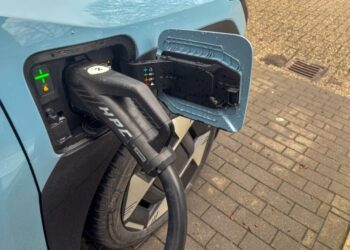The global automotive industry has been rocked by a shortage of semiconductors—tiny, yet critical components that power everything from engine management systems to infotainment displays. What began as a supply-chain disruption in 2020 has evolved into a protracted crisis, forcing automakers, suppliers, and governments to rethink production strategies, inventory management, and long‑term resilience plans. In this article, we explore how the chip shortage emerged, its multifaceted impact on vehicle manufacturing, and the innovative responses that are reshaping the industry’s future.
A. Origins of the Semiconductor Shortage
1. Pandemic Disruptions
When COVID‑19 lockdowns began in early 2020, automakers halted production and canceled chip orders expecting a drop in vehicle demand. Meanwhile, consumer electronics companies ramped up orders for laptops, gaming consoles, and remote‑work devices. As auto plants restarted, chip foundries were already booked fulfilling electronics contracts, leaving automakers at the back of the queue.
2. Concentrated Manufacturing
-
A. Geographical Concentration: Over 70% of advanced logic chips are produced by Taiwan Semiconductor Manufacturing Company (TSMC) and Samsung in South Korea. Any disruption—whether pandemic‑related, geopolitical, or natural disaster—creates a global ripple.
-
B. Limited Capacity: Building a new semiconductor fab can cost over $10 billion and take years, so capacity cannot quickly scale to meet sudden surges in demand.
B. Impacts on Automakers and Suppliers
1. Production Delays and Plant Idling
-
A. Staggered Shutdowns: Major OEMs including Ford, GM, Volkswagen, and Toyota have been forced to temporarily idle plants or cut shifts.
-
B. Model Prioritization: Some manufacturers prioritized high‑margin SUVs and trucks, delaying lower‑profit sedans and compact cars.
2. Financial Consequences
-
A. Lost Revenue: The industry-wide production shortfall is estimated to have cost automakers over $200 billion in potential sales in 2021–2022.
-
B. Increased Vehicle Prices: With new‑car inventories tight, average transaction prices rose by over 20% in some markets, benefiting resale values but frustrating consumers.
3. Supplier Strain
-
A. Tier‑1 Suppliers: Companies like Bosch, Continental, and Denso faced their own chip backlogs, complicating tier‑1 to OEM deliveries.
-
B. Smaller Tier‑2/3 Suppliers: These firms, with less negotiating power, saw the steepest shortages, threatening their business continuity.
C. Strategic Responses by Automakers
1. Direct Engagement with Chipmakers
-
A. Long‑Term Contracts: OEMs are signing multiyear agreements directly with TSMC, Samsung, and GlobalFoundries to secure dedicated capacity.
-
B. Joint Ventures: Toyota and Denso have invested in a new semiconductor plant in Japan to localize supply.
2. Design Simplification and Chip Substitution
-
A. Software Updates over Hardware: Where possible, features have been delivered via over‑the‑air software updates rather than new hardware modules.
-
B. Flexible Architectures: Engineers are redesigning electronic control units (ECUs) to accept alternative chip models, reducing reliance on single sources.
3. Inventory Management Overhaul
-
A. “Just‑in‑Case” Inventory: Automakers are shifting from lean “just‑in‑time” inventories to holding strategic safety stocks of critical semiconductors.
-
B. Supply‑Chain Visibility: Enhanced digital tracking tools provide real‑time visibility into component flows, enabling faster response to disruptions.
D. Government and Industry Collaboration
1. National Security and Economic Policies
-
A. CHIPS Acts: The U.S. CHIPS and Science Act allocates $52 billion to bolster domestic semiconductor manufacturing. The EU and Japan have launched similar subsidy programs.
-
B. Trade Partnerships: Governments are negotiating trade agreements to ensure smoother cross‑border flows of critical components.
2. Industry Consortia
-
A. Automotive‑Chip Alliances: Groups like the Global Automakers’ Semiconductor Task Force coordinate joint forecasting, demand planning, and advocacy.
-
B. Standardization Efforts: Harmonizing chip specifications across OEMs reduces complexity for suppliers and enables volume pooling.
E. Technological Innovations Accelerated by the Crisis
1. Consolidated Electronic Architectures
-
A. Domain Controllers: Replacing dozens of discrete ECUs with a few high‑performance “domain controllers” reduces overall chip count per vehicle.
-
B. Centralized Compute Platforms: Tesla’s “Hardware 4” and VW’s “Unified Compute Platform” exemplify this shift, simplifying wiring and software integration.
2. Edge AI and Software‑Defined Vehicles
-
A. AI‑Based Optimization: On‑chip AI algorithms optimize power management, predictive maintenance, and sensor fusion, making more efficient use of available semiconductors.
-
B. Over‑the‑Air Updates: The rise of software‑defined vehicles allows features to be added post‑sale, decoupling functionality from physical chip upgrades.
F. Long‑Term Outlook and Lessons Learned
1. Resilience Over Efficiency
The chip shortage has taught the industry that extreme lean‑manufacturing efficiency must be balanced with resilience. Future supply chains will likely retain more buffer capacity and diversified sourcing.
2. Strategic Vertical Integration
Automakers may increasingly internalize critical technology development, either through in‑house semiconductor design or equity stakes in foundries, to gain supply assurance and intellectual property control.
3. Collaborative Ecosystems
The crisis has underscored the need for open collaboration across competitors, suppliers, and governments to address systemic risks in critical industries. Shared forecasting, joint investments, and aligned standards will be key to preventing future disruptions.
![]()
Conclusion
The global chip shortage has been a stark reminder of the fragility of modern supply chains and the critical importance of semiconductors to the automotive industry’s future. In adapting through strategic partnerships, design innovations, and policy collaboration, automakers are not only weathering the current storm but laying the groundwork for a more resilient, software‑driven era of mobility. As the industry moves forward, balancing efficiency with robustness will be essential to ensure that the next-generation of connected, autonomous, and electric vehicles can be delivered reliably to consumers worldwide.













